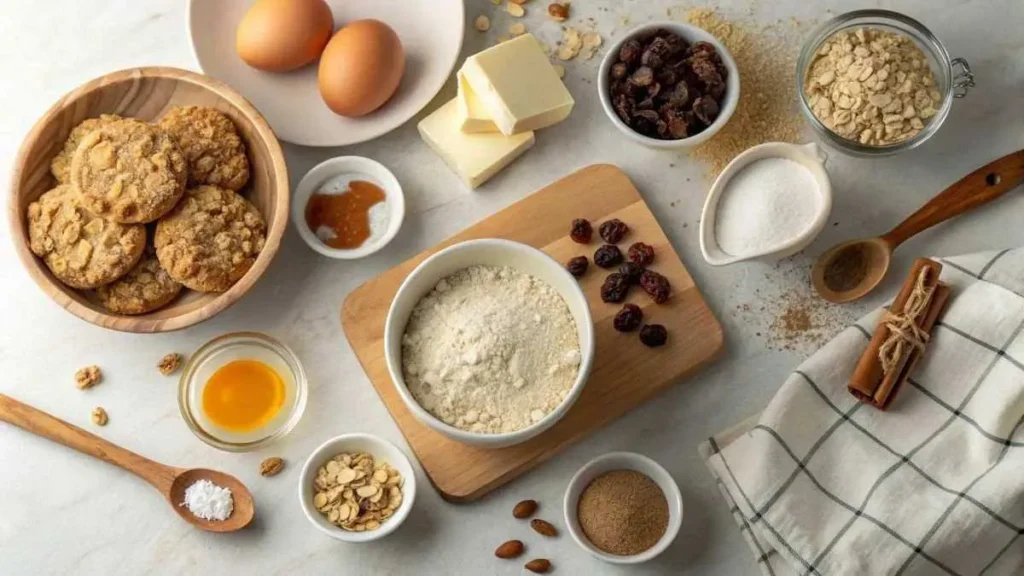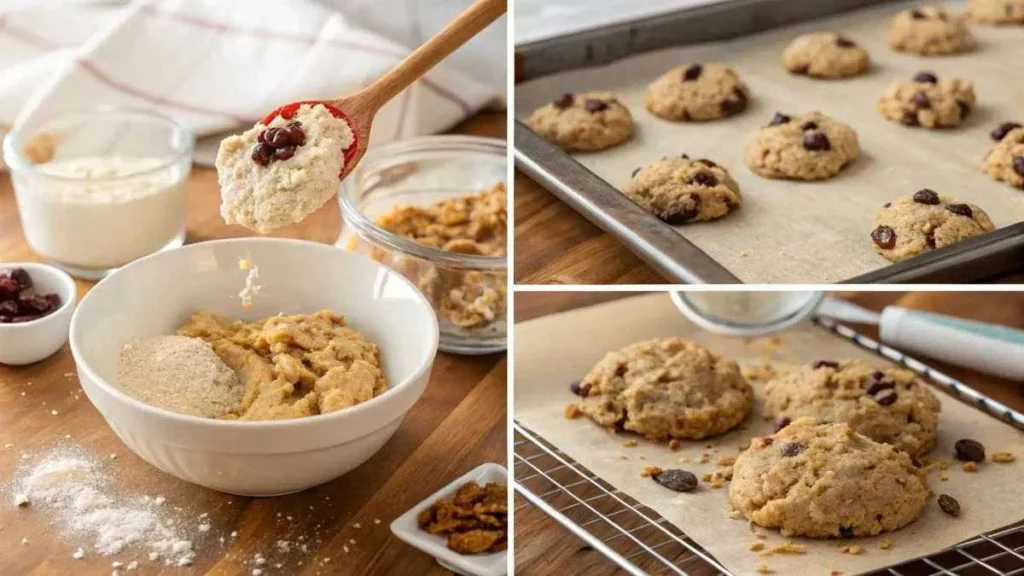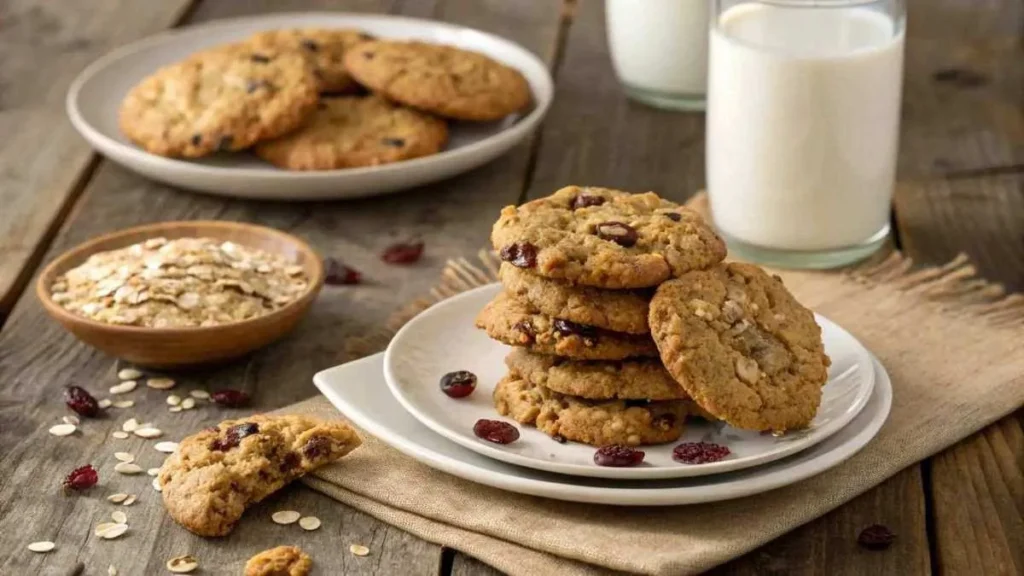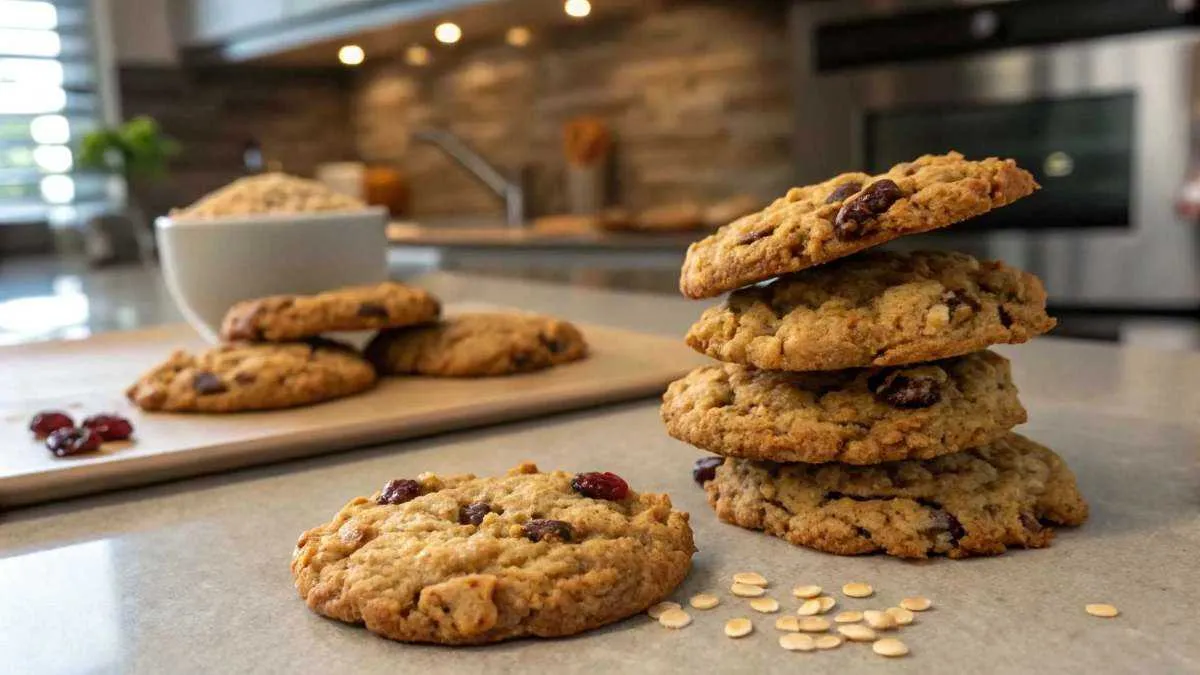Oatmeal cookies have been a household favorite for generations, and let’s be honest—Quaker Oats practically owns the game when it comes to that classic chewy goodness. Whether you grew up sneaking one (or five) straight from the cooling rack or dunking them in a glass of cold milk, there’s just something nostalgic about them.
But what makes these cookies so special? It’s a perfect mix of hearty oats, buttery sweetness, and just the right amount of chewiness. Plus, they’re ridiculously easy to make. The beauty of this recipe? You can tweak it to your heart’s content—whether you like them packed with raisins, loaded with chocolate chips, or even made with a healthy twist.
Let’s break it down and see how you can nail this classic treat at home.
History of the Quaker Oats Recipe
Believe it or not, oatmeal cookies have been around for over a century. The original Quaker Oats recipe appeared on the oatmeal box in the early 1900s, and ever since, home bakers have been churning out batches of these comforting treats.
The idea of putting oats into cookies wasn’t just about taste—it was practical. Oats were cheap, nutritious, and made the cookies heartier than the usual sugar or butter varieties. Back in the day, they were considered a wholesome snack, even for breakfast (which, honestly, is still a solid argument today).
Oatmeal cookies have stood the test of time, just like this healthy apple crumble recipe, which brings a nutritious twist to classic desserts.
“Oatmeal cookies have that magical ability to taste homemade no matter where you eat them. They’re the ultimate comfort food in a single bite.”
Nutritional Benefits of Quaker Oats oatmeal cookie
Now, I’m not saying oatmeal cookies count as health food—but they do have a few things going for them. Unlike your typical sugar-laden cookie, these guys come with a dose of fiber and protein, thanks to the oats.
Here’s why oatmeal cookies are a slightly better option than your average sweet treat:
- Oats are packed with fiber. They help with digestion and keep you full longer.
- They have a lower glycemic index than white flour cookies. This means they won’t spike your blood sugar as fast.
- You can make them healthier. Swap in whole wheat flour, use honey instead of sugar, or add nuts for extra protein.
If you’re looking for a wholesome treat, you might also enjoy our banana bread with 2 bananas, which is both simple and satisfying.
Love fiber-rich recipes? This pumpkin dump cake is another great way to enjoy the health benefits of oats. choice.
Table of contents
- History of the Quaker Oats Recipe
- Essential Ingredients for Quaker Oats Oatmeal Cookies
- Step-by-Step Guide to Making Quaker Oats Oatmeal Cookies
- Variations on the Classic Quaker Oats oatmeal cookies
- Troubleshooting Common Oatmeal Cookie Issues
- Storage and Serving Suggestions
- Frequently Asked Questions
- Conclusion: Mastering the Quaker Oats Oatmeal Cookie Recipe
Essential Ingredients for Quaker Oats Oatmeal Cookies
The best part about making these cookies? You probably have everything you need sitting in your pantry.
Using brown sugar in oatmeal cookies enhances their chewiness, just like in our peanut butter rice crispy treats, which offer the perfect balance of sweetness and texture.

Choosing the Right Oats: Quick vs. Old-Fashioned
This one’s important—what kind of oats should you use?
- Old-fashioned oats: These give you a chewier texture and a more rustic cookie. They hold their shape when baked and add a little bite.
- Quick oats: These are finer and will blend more into the dough, giving you a softer cookie.
Honestly, both work, but if you want that classic texture, go for old-fashioned oats. Quick oats are fine in a pinch, but don’t even think about using steel-cut oats—they won’t soften up enough and will make the cookies too tough.
The Role of Butter and Sugar
You know what makes oatmeal cookies irresistible? The perfect mix of butter and sugar.
- Butter adds richness and that melt-in-your-mouth quality. Room temperature is best—it creams beautifully with the sugar.
- Brown sugar keeps them moist and chewy. The molasses in brown sugar adds depth and a slight caramel-like flavor.
- White sugar adds crispiness. If you like a chewier cookie, use more brown sugar. If you want it a little crispy around the edges, up the white sugar.
Spices and Flavorings of Quaker Oats oatmeal cookie
A little cinnamon goes a long way in oatmeal cookies. It adds warmth and enhances the overall flavor. Some bakers also throw in a dash of nutmeg or vanilla extract for extra depth.
“The secret to the best oatmeal cookies? A pinch of cinnamon. It’s that subtle difference between ‘good’ and ‘can’t-stop-eating-them’ levels of delicious.”
Step-by-Step Guide to Making Quaker Oats Oatmeal Cookies
Alright, now that you’ve got your ingredients sorted, let’s get to the fun part—baking!
Preparing Your Ingredients
Before you even turn on the oven, get everything ready. This step makes life easier and prevents any “oops, I forgot the eggs” moments.
- Measure everything ahead of time. Baking is all about precision.
- Let your butter soften. If it’s too cold, it won’t cream properly with the sugar.
- Preheat your oven to 350°F (175°C). Getting the temperature right from the start is key.

Mixing Techniques for Perfect Texture
This is where the magic happens. How you mix your ingredients makes a difference.
- Cream the butter and sugar together. This step incorporates air, making the cookies light and fluffy.
- Add eggs and vanilla one at a time. Overmixing at this stage can make your cookies tough.
- Combine dry ingredients separately. This ensures everything is evenly distributed.
- Fold in the oats last. This keeps the dough from getting too heavy.
Just like achieving the perfect cookie dough texture, mastering oven-baked Chex mix requires the right balance of ingredients for crunch and flavor.
Baking Tips for Optimal Results
Now for the most important part—baking them just right.
- Use a lined baking sheet. Parchment paper prevents sticking and makes cleanup easy.
- Scoop dough evenly. A cookie scoop helps get uniform cookies that bake evenly.
- Bake for 10-12 minutes. You want golden edges but a soft center.
A properly preheated oven is key for cookies and baked goods alike—discover more baking techniques with this peach crumble recipe.
Variations on the Classic Quaker Oats oatmeal cookies
Once you’ve nailed the original recipe, it’s time to have some fun with it. The best thing about oatmeal cookies? They’re super easy to customize. Whether you’re a fan of chewy raisins, crunchy nuts, or rich chocolate chips, there’s a variation for everyone.
Adding Raisins and Nuts
If you’re all about that classic chewy texture with a little extra bite, adding raisins and nuts is the way to go.
If you love experimenting with flavors, try incorporating elements from this strawberry banana pudding into your oatmeal cookies for a fruity twist.
Adding nuts to your cookies? Consider pairing them with the crunchiness found in our fried cabbage and sausage recipe for a balanced meal.
Chocolate Chip Quaker Oats oatmeal cookies
Now, if you’re looking for something extra indulgent, tossing in some chocolate chips will do the trick.
- Semi-sweet chocolate chips work best. They balance out the sweetness of the cookie without being overpowering.
- Dark chocolate gives a richer flavor. If you like a bolder taste, go for a higher cocoa percentage.
- White chocolate and coconut make a great combo. If you want something different, try mixing in shredded coconut, too.
Honestly, you can never go wrong with chocolate.
Gluten-Free and Vegan Adaptations
For those who need a gluten-free or vegan option, don’t worry—you can still enjoy these cookies with a few swaps.
- Use gluten-free oats and flour. A 1:1 gluten-free baking flour works just as well as regular flour.
- Swap the butter for coconut oil or vegan butter. This keeps the cookies rich and moist.
- Replace eggs with flax eggs. Just mix 1 tablespoon of ground flaxseed with 3 tablespoons of water for each egg. Let it sit for 5 minutes before adding to the dough.
Troubleshooting Common Oatmeal Cookie Issues
Even though this is a pretty easy recipe, things don’t always go as planned. Maybe your cookies turned out too dry, spread too much, or came out way too soft. Let’s fix that!
Dealing with Dry and Crumbly Cookies
If your cookies are coming out dry, it’s usually because:
- You used too much flour. Always spoon and level your flour instead of scooping straight from the bag.
- The butter wasn’t soft enough. Cold butter doesn’t mix well, leaving you with dry dough.
- You overbaked them. Oatmeal cookies should be slightly underdone when you pull them out of the oven.
Preventing Cookies from Spreading Too Much
Ever had your cookies spread out into one giant mess? Here’s why:
- The butter was too soft or melted. If your dough feels too sticky, chill it in the fridge for 30 minutes before baking.
- You didn’t use enough flour. A little extra flour helps keep the cookies from spreading too much.
- The oven was too hot. If the oven is too high, the butter melts too fast, causing the cookies to spread.
Fixing Overly Soft or Hard Cookies
Sometimes cookies end up too soft or rock-hard. Here’s how to fix that next time:
- For cookies that are too soft: Bake them a minute or two longer. Also, letting them cool completely before storing helps.
- For cookies that are too hard: Reduce the baking time or use more brown sugar instead of white sugar for a chewier texture.
Storage and Serving Suggestions
Now that you’ve got a perfect batch of oatmeal cookies, let’s talk about keeping them fresh.
Just like cookies, crockpot buffalo chicken can be prepped in advance and stored for easy meals throughout the week.
Want a unique way to enjoy oatmeal cookies? Pair them with a side of broccoli casserole for a comforting meal.sh.

Proper Cooling and Storage Techniques
- Cool them on a wire rack. Leaving them on the baking sheet too long makes them overcook.
- Store in an airtight container. A sealed container keeps them soft for days.
- Add a slice of bread. This old trick helps keep cookies moist—just pop a small piece of bread in the container.
Freezing and Thawing Oatmeal Cookies
If you want to make a big batch and save some for later, freezing is the way to go.
- Freeze the dough: Scoop out portions of cookie dough, place them on a baking sheet, and freeze until solid. Then, transfer them to a freezer bag. When you’re ready to bake, just add an extra minute or two to the baking time.
- Freeze baked cookies: Let them cool completely, then store them in a freezer bag for up to 3 months.
Creative Serving Ideas
Oatmeal cookies are amazing on their own, but why not take them up a notch?
- Ice cream sandwiches: Just put a scoop of vanilla ice cream between two cookies—so good.
- Crumble them over yogurt: Adds crunch and sweetness to your morning bowl.
- Dip them in chocolate: Because chocolate makes everything better.
Frequently Asked Questions
Old-fashioned oats give a chewier texture, while quick oats make cookies softer. Both work, but for the classic feel, go with old-fashioned.
Instant oats are too fine and absorb moisture too quickly, making cookies dense instead of chewy.
Old-fashioned rolled oats are the best—they hold their shape and give cookies the perfect chew.
Likely because the butter was too soft, the dough wasn’t chilled, or the oven was too hot. Try chilling the dough before baking for better shape.
Conclusion: Mastering the Quaker Oats Oatmeal Cookie Recipe
There you have it—everything you need to make the perfect Quaker Oats oatmeal cookies at home! From choosing the right oats to nailing the ideal baking time, you now have all the tips and tricks to get that classic chewy, golden-brown cookie every time. Whether you prefer them with raisins, nuts, or chocolate chips, or you’re looking for gluten-free and vegan alternatives, this guide ensures you’ll bake a batch that’s just right.
If your cookies turned out too flat, too dry, or too soft, don’t worry! The troubleshooting section has your back. Plus, with proper storage and freezing tips, you can always have fresh cookies ready to go.
Now it’s your turn! What’s your favorite way to make oatmeal cookies? Do you have a secret ingredient or special technique? Drop a comment below and share your baking tips! And if you found this guide helpful, don’t forget to share it with fellow cookie lovers—because let’s be honest, homemade cookies are always worth talking about!
For more delicious recipe ideas and community discussions, follow us on Facebook!
